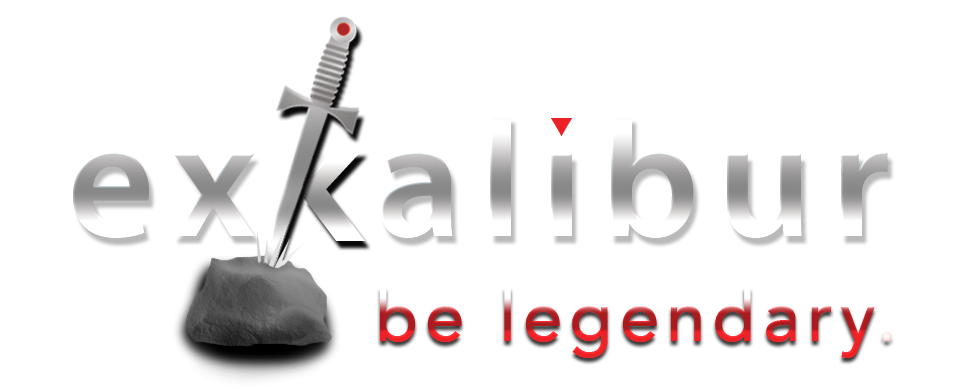If you can embed Flexibility into your company’s DNA, you’ll have the greatest possible chance to overcome the obstacles that bring companies to their knees. T oo often we haven’t prepared for the unexpected. Here are 7 proven ways for leaders to make sure that Flexibility is embedded in your organization to help you conquer uncertainty and get the results you need.

You’ve probably seen some of the makeover shows over the years?
The 60 Minute Makeover … Get Gorgeous … How Do I Look? … Remodeled … Style by Jury … it’s a pretty darn long list, and no, I haven’t seen any on this list.
Then there’s the Ambush Makeover show that aired in 2004 – 2005. In that show, stylists descended upon an unsuspecting soul whose hairdo, clothing, fashion in general was a disaster they were determined to fix.
Extreme Makeover, Home Edition was probably one of the most popular at one point.
If you saw that one, you may have thought,
[quote]That’s kinda cool. I wish they’d come to my house. I’ve got some stuff I’d like them to do.[/quote]
And, I’ll bet you didn’t give a moment’s thought to what it might cost.
Who cares? Those people are getting their makeover for “free”.
Mulligans are free. Do Overs? Not so much
We’ve all enjoyed a mulligan or three over the years, haven’t we? A little makeover or “do over” that we needed at some point?
Technically, mulligan is a golf term for another try … another shot … that will NOT be counted in the score. It’s a free “do-over” for an errant shot. In a friendly game, it might be granted “‘one a side”‘ (every 9 holes) any time you need a free shot because the previous one was a disaster.
The term has now become almost universal, referring to any “freebie” you get when you need one.
Recording something, then starting over. “Need a mulligan?”
Throwing an M&M into the air to catch it in your mouth … but missing? “Need a mulligan?”
You get the point.
Makeover. Remake. Redo. Do Over.
All these words mean about the same thing … something we’re doing over for some reason.
But, what if it isn’t free?
What’s the cost of closing a plant whose capacity you no longer need?
What’s the cost of moving walls and remodeling your offices when your requirements change?
What’s the cost of a fast hire that doesn’t work out after investing six months with them?
What’s the cost of deeply discounting a bunch of excess inventory?
One too many Do Overs might signify the beginning of the end
The one thing these makeovers do NOT have in common with reality shows?
THEY ARE NOT FREE!
Quite the contrary, they can be so expensive that they can bring your company to its knees.
Or, so expensive that you can’t afford them and essential changes are indefinitely postponed.
Invariably, the more you delay, the more expensive those needed changes become … assuming it’s not too late and your company survives the delay.
What do these challenges have in common?
[pullquote]The measure of intelligence is the ability to change.
~ Albert Einstein[/pullquote]
They often result from poor planning.
They may arise because you or someone on your team acted irrationally and without much forethought.
Maybe you and your team were rushing to get something done without taking the time and care that was needed. Or, you were so enthusiastic about a new product that you overbought it only to discover it wasn’t so popular after all.
When you’re facing disastrous results, it makes little difference whether they arise from poor decisions or brilliant ones, or whether they’re accidental or unexpected.
But, there is one factor that just might save you from such disasters.
Flexibility.
If there is one word that is missing from almost every business disaster I have witnessed during my career, it’s Flexibility.
The lack of it.
[quote]I love this product![/quote] … but it turned out you loved it much more than anyone else.
[quote]Build those walls. This office layout is awesome.[/quote] … but you never expected you’d run out of room so soon … or that business would suffer so much that you needed to cut your rent in half.
[quote]This acquisition will really put us on the map.[/quote] … but it turned out to be Dante’s map of hell.
We were doing the exact right thing … at exactly the right time … success was virtually inevitable.
Oops.
Not so much.
What’s the cost of inflexibility?
What decisions are you making that will be expensive or disastrous to change?
Modification will be expensive.
Change will be prohibitive.
Destruction or rebuilding will be more than you can handle.
What’s the cost of totally revamping your marketing or advertising plan because you launched it before it was well thought out, or you relied upon an inexperienced leader?
Computer System Do Overs? Killers!
What about your computer systems?
The cost of a Do Over is so significant that at companies like United Airlines, for example, you still see gate attendants and reservation agents typing endlessly.
Why?
Your flight is already booked, paid for and you probably are already holding a boarding pass.
I’ve always wondered … what could they possibly be typing?
Of course, when you’re working on a DOS system that’s been patched, repatched and repotted over the years … and you see a blinking green cursor on a black background … you know you’re dealing with a system that is every bit of ancient.
Too expensive to change … but a disaster waiting to happen.
I could continue with countless examples, but let me leave you with this thought.
Makeovers may often be needed, but most of the time, they’re the expensive result of a weak idea, poor planning or hasty and incomplete decision-making.
Bad ideas. Weak ideas. Half-baked ideas. Half-ass ideas.
What do they have in common?
There is overwhelming certainty … and no flexibility built into the plan.
Here’s what you can do about it to save yourself interminable heartbreak, pain and expense everywhere in your life.
7 Steps you can take to make sure FLEXIBILITY is embedded in your decision-making process
1. Think “flexibility” in everything you do.
Every idea isn’t brilliant and conditions and circumstances change rapidly.
Where possible, avoid expensive decisions that are irreversible. If it requires a stretch-size investment, make sure there are no other more flexible alternatives.
Every time you’re ready to launch ANY program or initiative, ask yourself:
[quote]Have I built enough flexibility so we can change course without killing ourselves? Which steps are too irreversible and how can we make them more flexible?[/quote]
2. Outsourcing is an empowering alternative.
Whether it’s a virtual team operating around the globe or just in your neighborhood, you can always adjust when business goes sideways.
There’s always someone with excess capacity to help you when business is booming. It may be more expensive on a per unit basis, but it will prove far less costly than hiring permanent employees … or building a new plant to handle a sales overflow that is only temporary.
Consider outsourcing as an alternative in every decision-making process so you can avoid committing to major and irreversible investments.
3. Gather and Organize Intelligence.
By this I mean, gather information.
One of the 5 staff positions in any military command structure is the G2 … Army parlance for the Intelligence Officer.
The G2 takes whatever steps are necessary to collect and analyze data to provide guidance and direction to commanders in support of their decisions.
In our world, this would include the business environment, the competition, the capability of our teams and much more … all of it on both a strategic and tactical level.
Don’t be lazy about doing your research. Don’t fall into the trap of paralysis by analysis, but do your homework.
Yes, your intuition is valuable … your “gut instinct” can be very powerful … but don’t bet the ranch on it!
4. Create a Plan.
How many times do we sacrifice any kind of a plan because we’re eager to get started?
Do you carefully prepare for those all important interviews … you, know, those that help build a great leadership team … or do you just grab the resume on the way to the interview and read it for the first time while your interviewee is talking?
It’s remarkable how many leaders follow this routine, giving little thought at that moment to how expensive and damaging it is to make a wrong hiring decision …
- how much it costs to fix it,
- how your credibility is damaged,
- how far behind are the initiatives that executive was supposed to drive?
Sure, planning slows down the process but only because you started it too late.
Whenever you’re considering a new initiative, project or program, make sure that a planning phase occurs at the front end.
Make the time for it … and for your team … to lay out the options and make sure you’re clear on the objective and the resources to achieve it.
5. Create another plan … a Backup Plan.
[pullquote]No battle plan survives contact with the enemy.” Helmuth Von Moltke[/pullquote]
There’s a reason that Special Forces operations focus intently on a Plan B.
- Where to meet if the first choice is inaccessible?
- What alternative route do we take if the primary course is blocked?
- What if we lose radio contact?
- What’s an alternative extraction point?
The backup plan is developed as meticulously as the original plan.
There’s a backup plan for every element of “the plan”. See the accompanying quote if you’re not sure why.
Make sure you always have a way out. Always consider an alternate route, a way to retreat and reorganize your forces.
6. Rehearse. Practice. Repeat.
There’s probably never been a movie, TV show or theater production that wasn’t consumed by rehearsals before final filming or production.
Popular broadway shows often go off-off-broadway to perfect their production before it hits the Great White Way. (For the record, this is not a racial term but a nickname earned because a section of midtown New York was illuminated in 1880 by Brush arc lamps, making it among the first electrically lighted streets in the United States.)
Restaurants have a test kitchen. Retailers have a merchandising lab. Some larger retailers have even built full-size stores in a rented warehouse to test out their concepts before opening 10 or 50 stores just like it.
There are a lot of things you can practice before you go live. Don’t overlook those opportunities.
They can really save your bacon.
7. Conduct After Action Reviews
I’ve written about the invaluable tool of After Action Reviews at some length.
They are great accountability tools and another way to reinforce accountability across the organization.
They are also easily implemented, and while they won’t help you in the first instance of a misfire, they will certainly help you learn from what’s already happened and help you avoid it the next time.
Do this every time a program or project is completed and you’ll be building a powerful toolkit to guide your future decisions
Build Flexibility into everything you do.
If you do nothing else in your entire professional career, build flexibility into everything you do by incorporating these 7 Steps You Can Take to Make Sure FLEXIBILITY is Embedded in Your Decision-Making Process.
If you check off each of these items when you’re considering a new initiative, program or product, you’ll minimize the risk of failure and maximize your chance of ultimate success:
- Think “flexibility” in everything you do..
- Outsourcing is an empowering alternative
- Gather & Organize Intelligence.
- Create a Plan
- Create another plan … a Backup Plan
- Rehearse. Practice. Repeat.
- Conduct After Action Reviews
You can conquer almost anything if your plan is flexible … and so are you.
Make sure you are dead sure that things will surely not go as planned.
That Murphy character is always lurking around the corner, just waiting for his opportunity to ruin your day.
Make sure Flexibility is always your friend. Do overs are not.
Question: What outcome can you change right now by baking Flexibility into your plans? Visit our Facebook Page to share your thoughts and comments.



